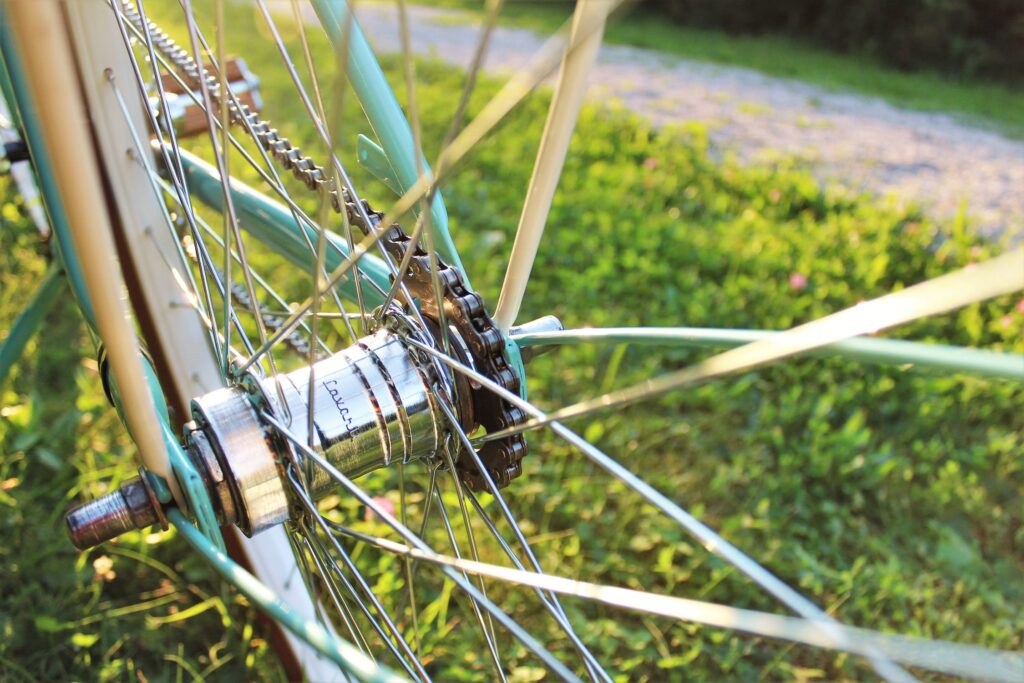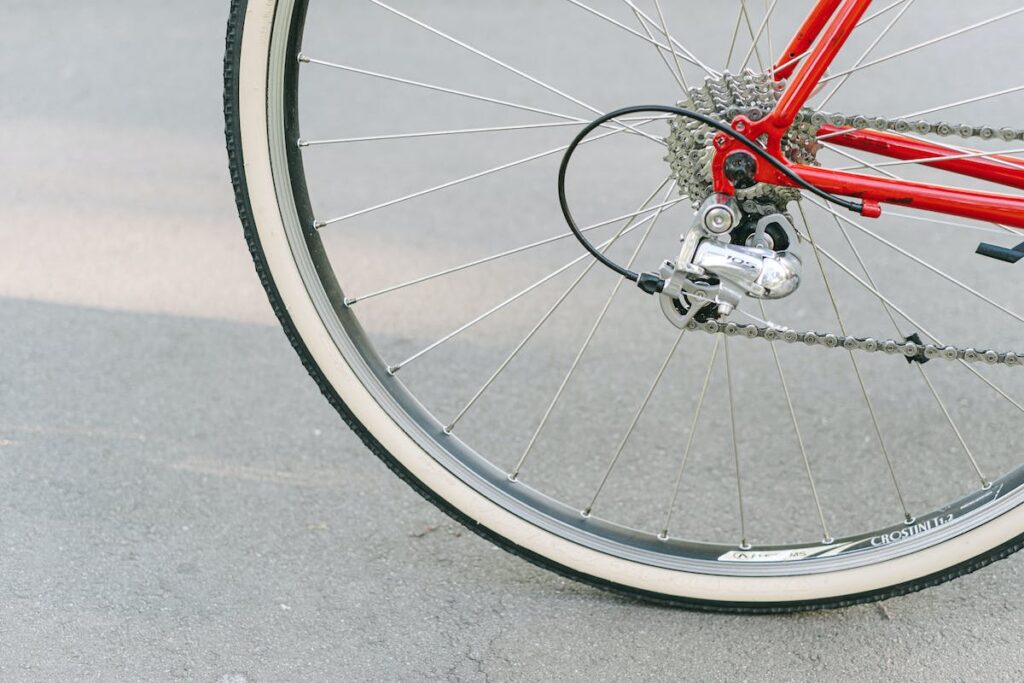A bicycle chain is composed of numerous links. Most chains feature links that alternate between wide and narrow widths in a pattern that is repeated throughout the chain’s length.
Each link contains two side plates that are connected by rivets, sometimes known as pins, and the outer link’s shoulder is occupied by a roller. Although they are typically missing from modern chains, separate bushings can occasionally be found on either side of the roller in some chains.
Although it might not seem like much, your road bicycle’s chain is one of its most crucial parts. If you don’t lubricate it, pedalling is severely hindered. If you break it, your featherweight wonder is all but useless unless you’re willing to fix it. Depending on how and where you ride, you might get a few thousand pleasant miles out of a high-quality chain if you take care of it. When it comes to choosing a bicycle chain for your bike, there are a few things to consider to ensure you get the right one for your needs.
The following are some tips to help you choose the right bicycle chain:
1. Determine the type of bike you have:

Before you can choose a bicycle chain, you need to determine what type of bike you have. This is the first and most essential factor you ought to consider when choosing a bicycle chain. There are many various kinds of bikes. These include road bikes, mountain bikes, hybrid bikes, and more. Each type of bike requires a different type of chain, so make sure you know what type of bike you have before you start shopping for a chain.
2. Count the number of gears:

The next step in choosing a bicycle chain is to count the number of gears on your bike. This will help you determine the width of the chain you need. Many mountain bikes have 10, 11, or 12 speeds, and a chain will be plainly marked as such when purchased. Pick the chain that corresponds to the number of gears, or “speeds,” your bike has by counting the gears on the back cassette and multiplying that number by the number of chainrings up front.
Chains come in different widths, and the width you need will depend on the number of gears you have. For example, a 10-speed bike requires a narrower chain than a 7-speed bike.
3. Decide on the material:

It is important to decide on the material when choosing a bicycle chain. Bicycle chains are made from a variety of materials, including steel, titanium, and nickel. Each material has its own advantages and disadvantages, so it’s important to do some research to determine which material is best for your needs. Steel chains are the most common and are generally the most affordable, but note that they can rust over time. Titanium chains are more expensive but are lighter and more durable, while nickel chains are corrosion-resistant and long-lasting.
4. Consider the brand:

Bicycle chains come in a wide variety of brands, some of which are superior to others.Some of you might not know this but It’s extremely crucial to select a reliable brand with a solid track record for dependability and quality. Leading manufacturers include Shimano, SRAM, and KMC.
5. Think about your riding style:

Finally, it is very important to consider your riding style when choosing a bicycle chain. If you do a lot of off-road riding, you may want to choose a chain that is more durable and can handle rough terrain. If you ride mostly on paved roads, a lighter chain may be a better option.
Conclusion:
By carefully considering these factors, you can choose the right bicycle chain for your bike and ensure that it fits perfectly. Choose a bike chain that will make sure your transmission is positive and slick, tying the chain assist to your gear shifts invisibly. There are many bike chains available that need little upkeep and last longer. Happy riding!

